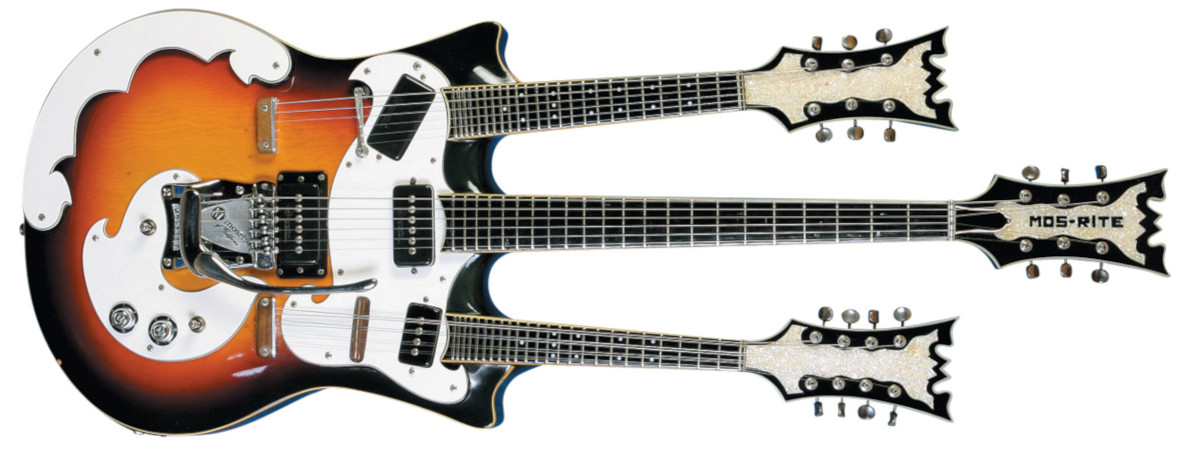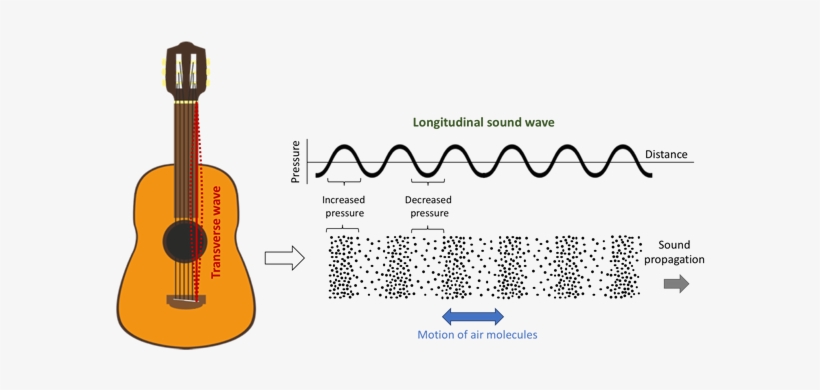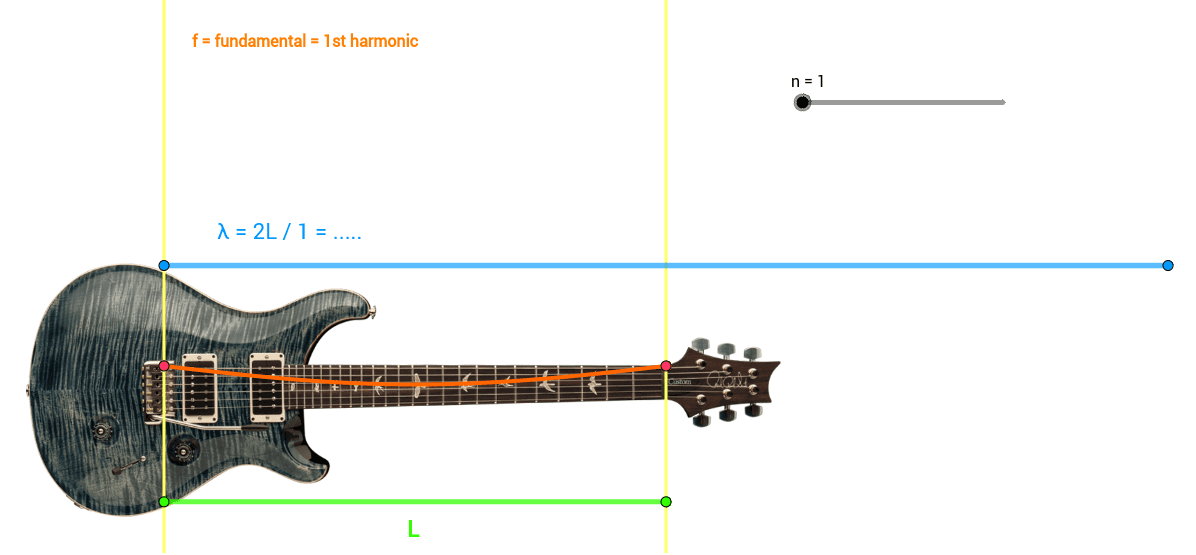
The Science of Sound: How Guitars Produce Music

It's a monster!
The guitar is a fascinating instrument. With its six strings and fretboard, it has the power to evoke emotions, inspire creativity, and bring people together. But have you ever stopped to think about how it actually works? How do those strings produce sound, and how do we turn that sound into music?
Well, my friend, it all starts with the science of sound.
Sound is a wave, a vibration that travels through the air (or any other medium) at a certain frequency. Our ears pick up those vibrations and our brains interpret them as sound. The frequency of a sound wave is measured in hertz (Hz), with lower frequencies producing deeper sounds and higher frequencies producing higher-pitched sounds.

Like this......but sound, obviously.....
Now, when it comes to the guitar, the sound is produced by the vibration of the strings. When you pluck a string, it vibrates back and forth, creating a disturbance in the air around it. That disturbance then travels through the air as a sound wave, eventually reaching our ears.
But how does that vibration turn into music? Well, that's where things get a bit more complex.

The sound of a guitar string is not a simple, pure tone. Instead, it's a complex waveform that contains a fundamental frequency (the main pitch we hear) and a series of overtones (higher-pitched frequencies that give the sound its character). These overtones are what make a guitar sound different from a piano or a trumpet.
Now, here's where things get even more interesting. When you play a note on a guitar, you're not just producing one sound wave. You're actually producing a series of harmonics, or related frequencies, that all work together to create the sound we hear.
Each of those harmonics has a different amplitude (or volume) and phase (the position of the wave at a given point in time). These differences in amplitude and phase give each note its unique timbre, or tone quality. This is why the same note played on a guitar sounds different from the same note played on a piano or a saxophone.

As explained by this very simple and clear diagram.
But the science of sound doesn't stop there. Once the vibrations of the guitar strings are turned into sound waves, they need to be amplified and shaped in order to create music. This is where the guitar's pickups and electronics come into play.
A guitar pickup is a device that converts the vibrations of the strings into an electrical signal. This signal is then sent to an amplifier, which boosts the signal's voltage and sends it to a speaker, where it's turned back into sound waves that we can hear.
But the amplifier and speaker aren't just there to make the sound louder. They also play a crucial role in shaping the sound of the guitar. The amplifier's tone controls, such as bass, mid, and treble, can be used to boost or cut certain frequencies, allowing you to tailor the sound of the guitar to your liking. The speaker also has its own unique characteristics that can affect the tone of the guitar.

See. Exactly. Now you can build them yourself.
So, there you have it, folks. The science of sound and how it relates to the guitar. From the vibration of the strings to the complex waveform of the sound to the amplification and shaping of the signal, it's a complex and fascinating process that allows us to create beautiful music.
As the great Hunter S Thompson once said, "Music has always been a matter of energy to me, a question of fuel. Sentimental people call it inspiration, but what they really mean is fuel. I have always needed fuel. I am a serious consumer. On some nights I still believe that a car with the gas needle on empty can run about fifty more miles if you have the right music very loud on the radio."
And that's the power of music. It's not just a collection of notes and rhythms, but a fuel that drives us forward, inspires us, and connects us to something greater than ourselves. And the guitar, with its ability to produce such a wide range of tones and emotions, is a perfect vehicle for that energy.
So, whether you're a seasoned guitarist or a casual listener, take a moment to appreciate the science of sound and the incredible instrument that is the guitar. It's a testament to the power of human ingenuity and creativity, and a reminder of the magic that can be found in even the simplest things.
Maybe let's finish with one more quote from the man himself, "The music business is a cruel and shallow money trench, a long plastic hallway where thieves and pimps run free, and good men die like dogs. There's also a negative side." But despite the challenges and complexities of the music industry, the science of sound and the magic of music continue to inspire and captivate us all.
Join us instore at Musicmaker, and experience the beauty of the aural sciences for yourself.




